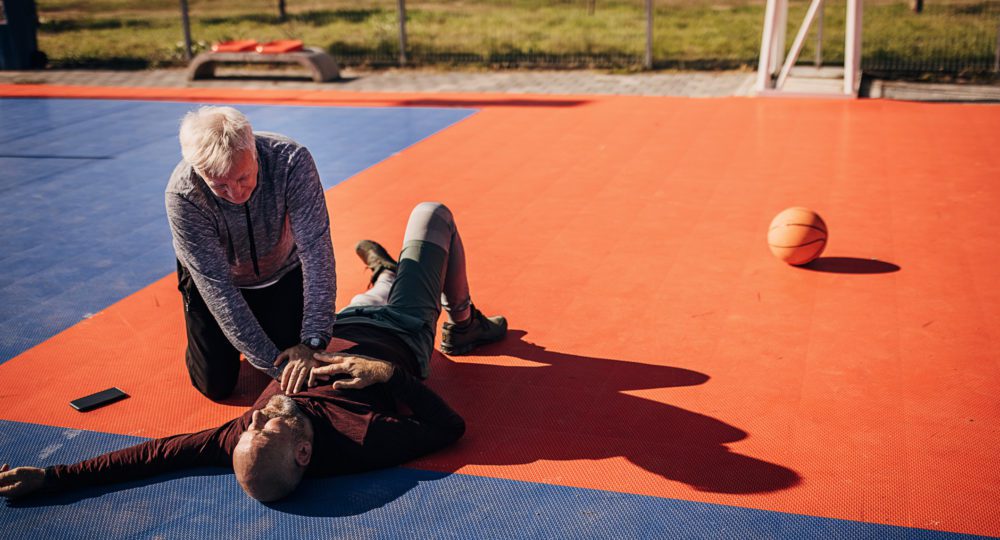Sudden Cardiac Arrest (SCA) is a medical emergency that happens when the heart suddenly stops beating. Without quick action to revive the heart, a person can die in minutes. Recent data indicates that SCA claims a life every 90 seconds.
An out-of-hospital cardiac arrest (OHCA) occurs outside of the hospital setting and can be witnessed or unwitnessed. Based on 2020 Cardiac Arrest Registry to Enhance Survival (CARES) registry data that helps to monitor this public health crisis, OHCA occurs in nearly 1,000 people per day (356,000 people per year), which has increased 119% from pre-pandemic periods. CARES data from 2020 reports that 73.9% of OHCA occurred in the home/residence, 15.1% in a public setting, and 10.9% in a nursing home. Of those 356,000 OHCA, 50.1% were un-witnessed, 37.1% were witnessed by a layperson, and 12.8% were witnessed by a first-responder.
The recent Heart Disease and Stroke Statistics—2022 Update from the American Heart Association (AHA) indicates that 90% of OHCA are fatal. Survival to hospital discharge after EMS-treated OHCA was just 9% and survival to hospital discharge with good functional status decreased to 7%. During a witnessed OHCA, the administration of immediate cardiopulmonary resuscitation (CPR) can double or triple survivability. CARES data from 2020 reports that layperson CPR was initiated in only 40.8% of OHCA. Studies have shown that for every minute CPR is delayed in SCA, the chance of survival decreases 7-10%.
According to training data from the AHA, the American Red Cross, and the Health & Safety Institute, the largest providers of CPR training in the United States, median annual CPR training rates for US counties was 2.39%. Training rates were lower in rural areas, counties with high proportions of Black or Hispanic residents, and counties with lower median household income. Prevalence of reported current training in CPR was 18% and prevalence of having CPR training at some point was 65% in a survey of 9022 people in the United States in 2015. Despite sparse and often disappointing data for CPR skill performance and retention, CPR training in any form remains valuable. Previous CPR training is the single most powerful factor contributing to performance of bystander CPR.
Anyone can learn CPR. Sadly, 70 percent of Americans may feel helpless to act during a cardiac emergency because they either do not know how to administer CPR or their training has significantly lapsed. This alarming statistic could hit close to home, as 4 out of 5 OHCA occur in the home. Statistically speaking, if called on to administer CPR in an emergency, the life you save is likely to be that of someone you love: a child, a spouse, a parent, or a friend.
The AHA is calling on all Americans to learn how to give Hands-Only® CPR by watching a simple one-minute video at heart.org/handsonlycpr. You can prepare yourself to act in an emergency by simply viewing the Hands-Only® CPR instructional video. Partnering with AHA, you can join Damar Hamlin’s #3forHeart CPR Challenge™ with three simple steps to save a life- Step 1: Learn CPR, Step 2: Give, and Step 3: Share your Support. You can learn more about the challenge at https://www.heart.org/en/damar-hamlins-3-for-heart-cpr-challenge.
Resources:
Sudden Cardiac Arrest Foundation
Heart Disease and Stroke Statistics—2022 Update: A Report From the American Heart Association
American College of Cardiology
NIH National Library of Medicine National Center for Biotechnology Information
—
Photo by South_agency on iStock





